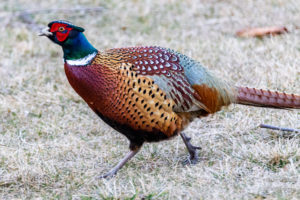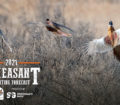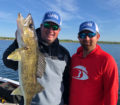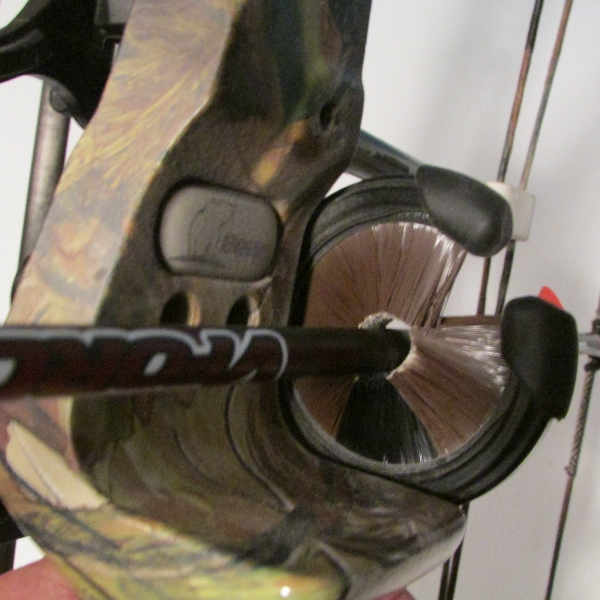By Steve Weisman

(Photo by Bill Beardsley)
Each year pheasant hunters across Iowa wait in anticipation for the results of the DNR’s August Roadside Survey. This is a yearly count that has taken place every August 1-15 since 1962. The survey has been a basis for providing an upland bird count forecast for each year. The statewide survey includes DNR personnel driving 218, 30-mile routes on gravel roads (the same routes each year) on mornings with heavy dew.
All of this data is then collected and turned over to Todd Bogenschutz, Upland Wildlife Research Biologist and his staff, who then put a report together that gives a state-wide forecast, along with a closer look at nine different regions across the state. If you like to look at numbers and trends, the entire report is available at www.iowadnr.gov/pheasantsurvey.
Looking back to the results from last year, the 2020 pheasant hunting season saw hunters harvest nearly 300,000 birds, which was the second highest number in over 10 years. At the same time, there was an increase of 10,000 hunters in the field. I have a feeling that the positive bird counts from this year’s August roadside count will mean even more hunters will return to the field in 2021. As I analyze the forecast, the data that I use has been gleaned from the compilation of the 2021 pheasant survey.
In looking at the report, two things stood out to me: the areas that had a milder winter with less snow and ice, along with good winter and spring nesting cover had much better counts. At the same time, the dry spring offered birds good nesting and hatching opportunities.
Three of the regions averaged at or more than 30 birds per route. They include the northwest, north-central and west central sections of the state. According to Bogenschutz, the northwest region count of 29.84 birds was 6 percent better than 2020 and was the most since 2016. Meanwhile, the highest counting region was the north central at 31.81 birds, 34 percent higher than 2020 and the highest that region has seen in 14 years.
The west central section of the state reported 31.6 birds per route only slightly less than the north central region. The last time the west central region was over 30 birds per route was 16 years ago.
All three regions should offer good to excellent pheasant hunting, particularly around public and private lands featuring good winter habitat and nesting habitat. Better counts in the northwest came from Clay, Dickinson, Emmet, Osceola, Palo Alto and Pocahontas counties. Butler, Cerro Gordo, Floyd, Hancock, Kossuth, Winnebago and Wright counties reported better numbers in the north central region, while the west central region reported better counts in Calhoun, Greene, Ida and Sac counties.
The gray partridge is a bonus bird for many pheasant hunters. Numbers were up in both the northwest and north central regions, and stable trends in the west central region.
In visiting with Chris Subbert, Emmet County Conservation Officer, he was encouraged by what he saw as he covered his routes in Emmet County. Subbert noted an extra two broods per route with broods averaging six chicks per brood. He also found a wide range in age with one brood just about full grown, while another appeared to be only a few days old.
Subbert added that gray partridge numbers were up with broods averaging 10-12 per brood. Hunting should be good, especially around state/federal lands with good mix of upland habitat and wetlands. Areas of private CRP land will also offer good hunting.
Much of the success during the early season has to do with the corn and soybean harvests. With the dry summer weather, most of the crops will probably be harvested by the October 30 opener. Some hunters like the early harvest that pushes the birds into the more huntable grasslands, while the late season hunters would rather have the crops in during the early season, which saves more birds for the late season.
Quail numbers had been increasing over recent years, but this year’s statewide quail index has dropped to 0.38 birds per route compared to the 2020 count of 0.74 birds per route. This is 58 percent below the 10-year average. The culprit, again, is the weather. The months of January and February had lots of ice cover and subzero temperatures. The southwest region had the best overall quail counts with 1.5 birds per route down from 3.28 birds in per route in 2020.
To wrap it up, the pheasant hunting opportunities here in northern Iowa are good. It all comes down to access to land with good upland habitat. With most of the crops likely out by the end of October, I look for more hunters afield during the early season. As a result, it will be a good idea to scout the areas you want to hunt. Also, with about a month until the opener, this would be a good time to shoot some clay targets and get in some exercise for you and your hunting dog.

















